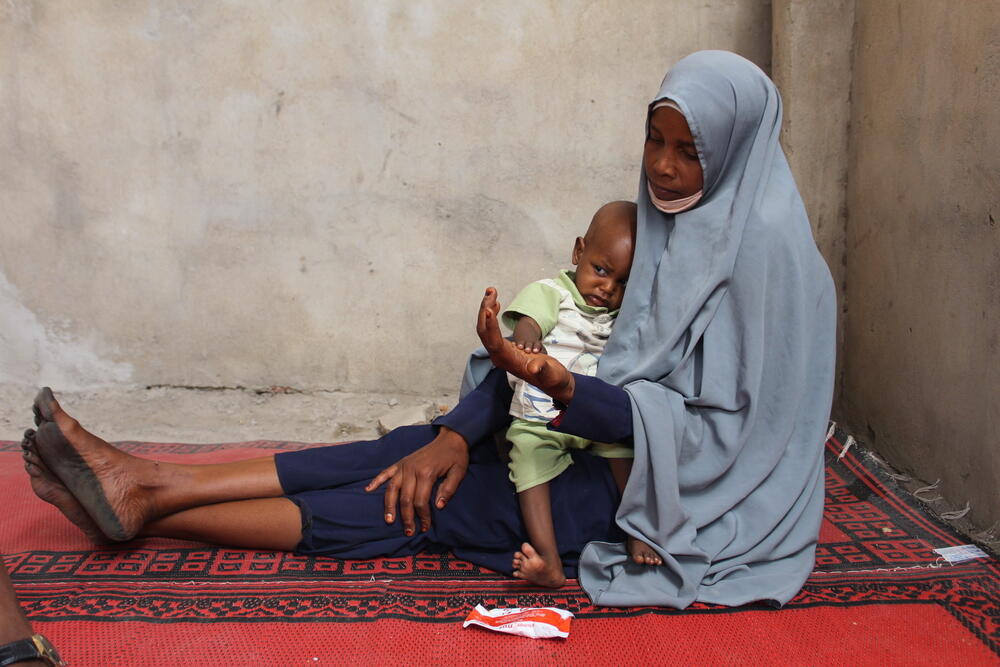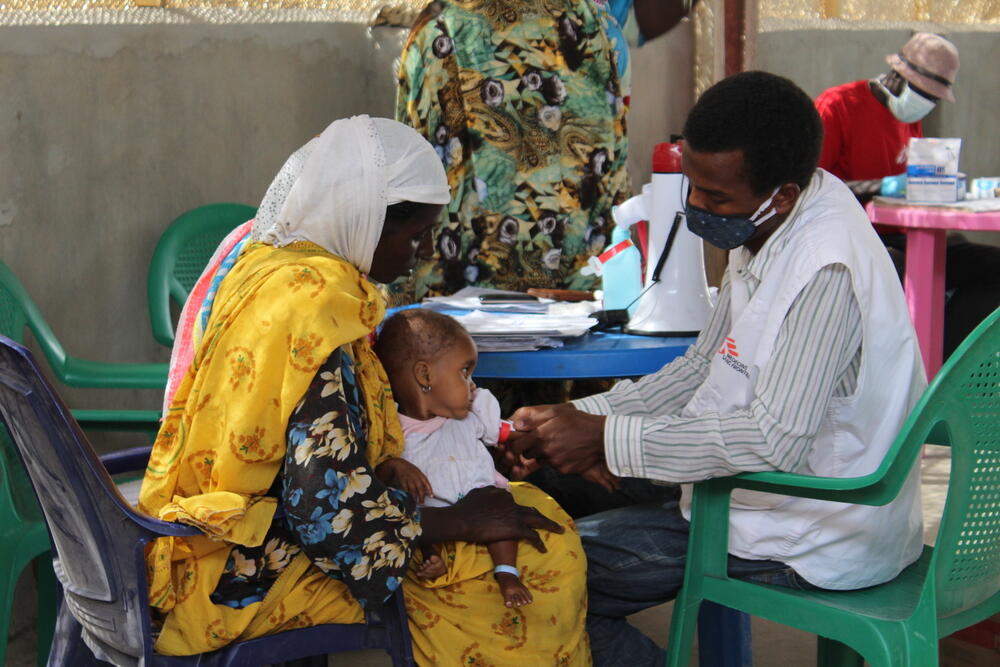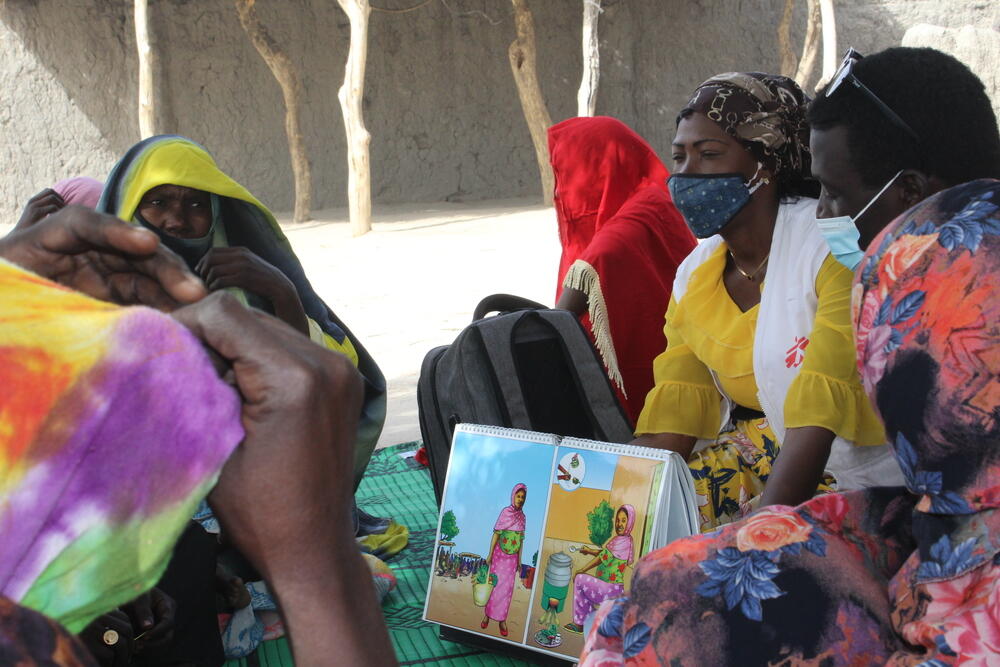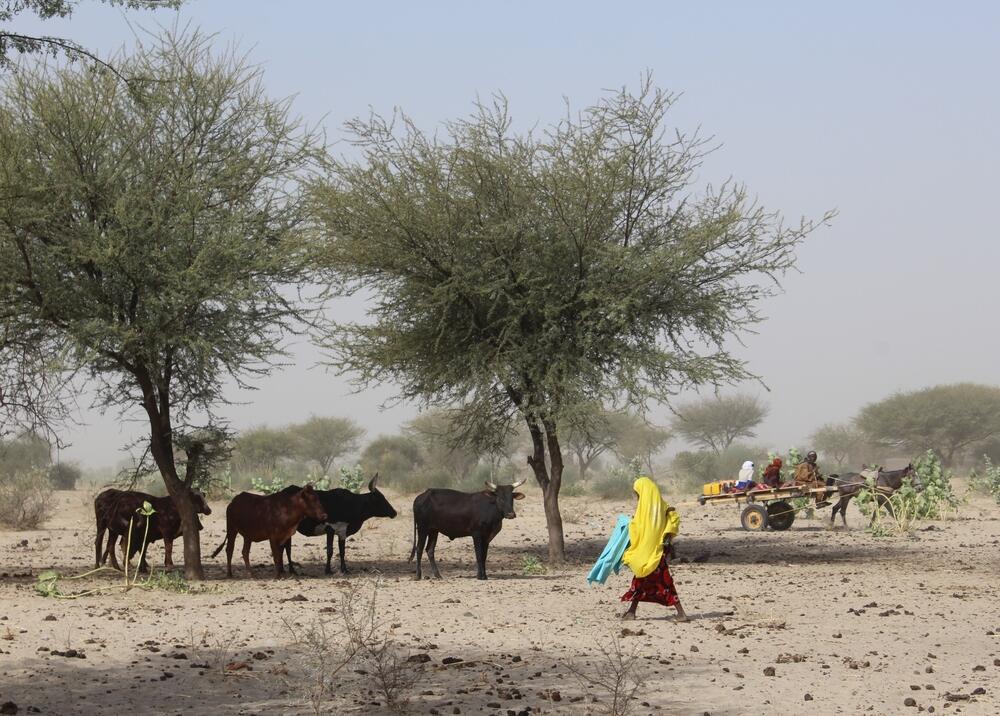Malnutrition: The climate-driven crisis facing families in Chad
Chad is one of the world's countries most vulnerable to climate change, with desertification driving dangerous food insecurity. Here, MSF teams have launched an emergency response to face a growing child malnutrition crisis.
Thirty-year-old Khadidja Iba sits on a colorful mat in the waiting area of a therapeutic feeding centre run by Médecins Sans Frontières / Doctors Without Borders (MSF) in Massakory, a small town in Chad’s Sahel belt.
The mother of six has walked for two hours to bring her youngest child, nine-month-old Sara, for a follow-up visit. She has been enrolled in a nutrition programme for a month.
After an assessment with MSF healthcare staff, Khadidja receives a week’s worth of bright red packages of Plumpy’Nut – a high-energy peanut paste used to treat malnutrition that she will feed the baby until her next assessment the following week.
“There is some fear that the worst is yet to come, that the hunger gap will start earlier than usual and that it could be longer and more severe”
MSF launched a nutrition response in Chad’s Hadjer Lamis province in September 2021 after receiving an alert about a significant number of people with the condition, as well as learning that only one of the province’s five health districts was receiving support.
The province recorded more than 28,000 cases of severe acute malnutrition in 2021.
A rolling crisis
Malnutrition is a recurring crisis in Chad – a country in Africa’s increasingly arid Sahel region. The widespread condition especially affects children under five, as well as pregnant and breastfeeding women.
The causes of this malnutrition are complex, including poor harvests and inadequate dietary choices, with social and cultural factors playing a part. However, this year, the situation has been exacerbated by an unusually short rainy season.
“There was very little rain this year. It was worse than any year I remember,” says Khadidja Iba.
“We hardly harvested anything. We need to buy vegetables at the market, but everything costs almost twice as much now. We don’t have enough to eat.”
Food insecurity is not the only worry of people living in this arid, inhospitable region. An even bigger concern for many is a lack of water.
“We have two wells in my village, but it’s not enough for all the people and animals. I have to pump for five to six minutes to get water,” says 25-year-old Khadidja Mahamat.
“The water tastes bad, we mostly give it to the animals. To get drinking water, I go by donkey to another village. It takes me one-and-a half hours each way.”
The bad quality of the water causes diarrhoea and other health issues, increasing the risk for children of being malnourished.
Prevention and detection
MSF is providing therapeutic feeding services for children at seven health centres in the province, as well as supporting the treatment of severely malnourished children at Massakory hospital.
In support of this, MSF teams also visit remote villages in the area to teach mothers how to prevent and detect malnutrition in children. Health promoters show the women how to use ‘MUAC bands’, a colour-coded paper band that is wrapped around a child’s arm and indicates if they are healthy, slightly or severely malnourished.
Medical care where it's needed most
Help us care for people caught in the world's worst healthcare crises.
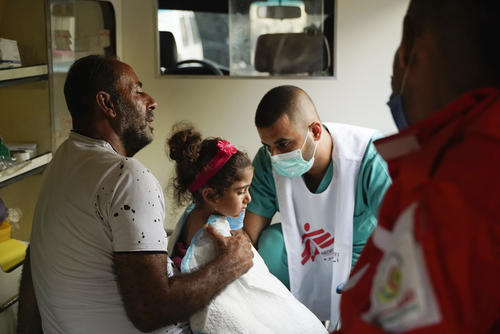
When the MSF teams arrive, they find mostly women, children and older men.
Many younger men have left to find work in other parts of Chad or in neighbouring countries such as Cameroon, Niger and Libya. Others have taken their cattle to the south of the country in search of better pastures. Most men will return for the next planting period.
This temporary migration is a coping mechanism that is nothing new, but, according to 50-year-old Osman Abakar, the young men left earlier than usual this year due to the bad harvest.
“We are afraid of the future,” he says.
“All we can do is wait for the next rains. If the rain abandons us another time, we don’t know what to do.”
The Sahel region is considered one of the world’s most vulnerable to climate change, with rising temperatures, erratic rainfalls, and increasing desertification.
Over the last 10 years, Chad’s Saharian and Sahelian zones have spread almost 100 miles south, resulting in reduced farming and pasture areas.
The growing hunger gap
MSF was alerted to the crisis relatively late after the most acute phase of malnutrition in Hadjer Lamis. However, the team has now treated more than 1,600 children in outpatient feeding centres in the first 15 weeks of the response.
They are also busy preparing for next year’s ‘hunger gap’ – a period of food insecurity that occurs between harvests.
“There is some fear that the worst is yet to come, that the hunger gap will start earlier than usual and that it could be longer and more severe,” says MSF’s medical team leader Ibrahim Barrie.
“It’s a continuous crisis, no longer just a hunger gap. At the same time, funding for nutrition and food security in Chad has gone down.
"We need a better aid response to prevent children from dying from malnutrition.”
Climate emergency
The climate emergency is also a healthcare emergency. When extreme weather events occur, it is the most vulnerable people who suffer the most.
This crisis isn’t only about the catastrophic cyclones and typhoons that hit the headlines. This is about the spread of deadly disease that can follow. The increasing risk of drought and famine. Of rising water levels. Desertification. The mass displacement of people from their homes…
In every way, climate change is a massive humanitarian emergency.
